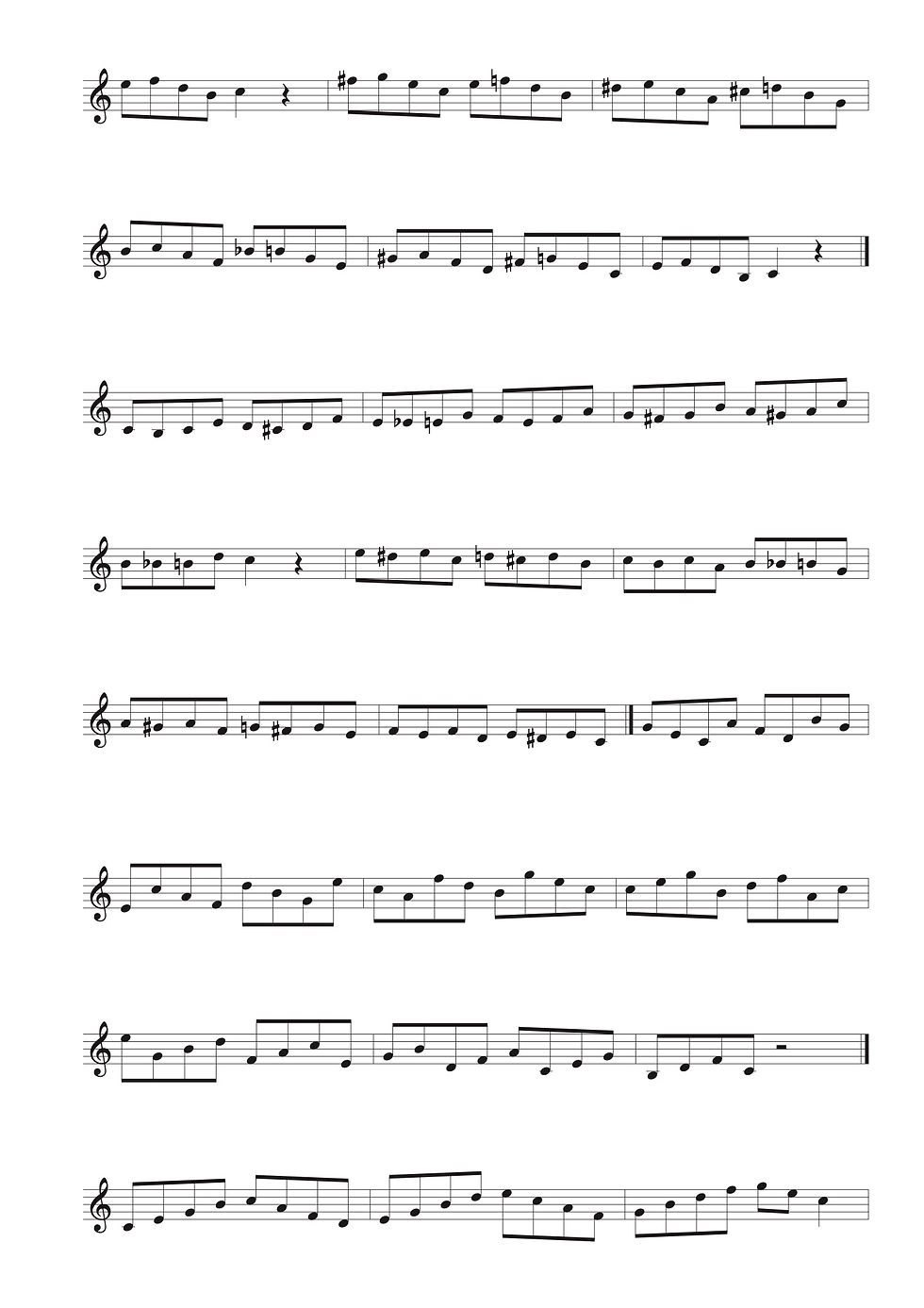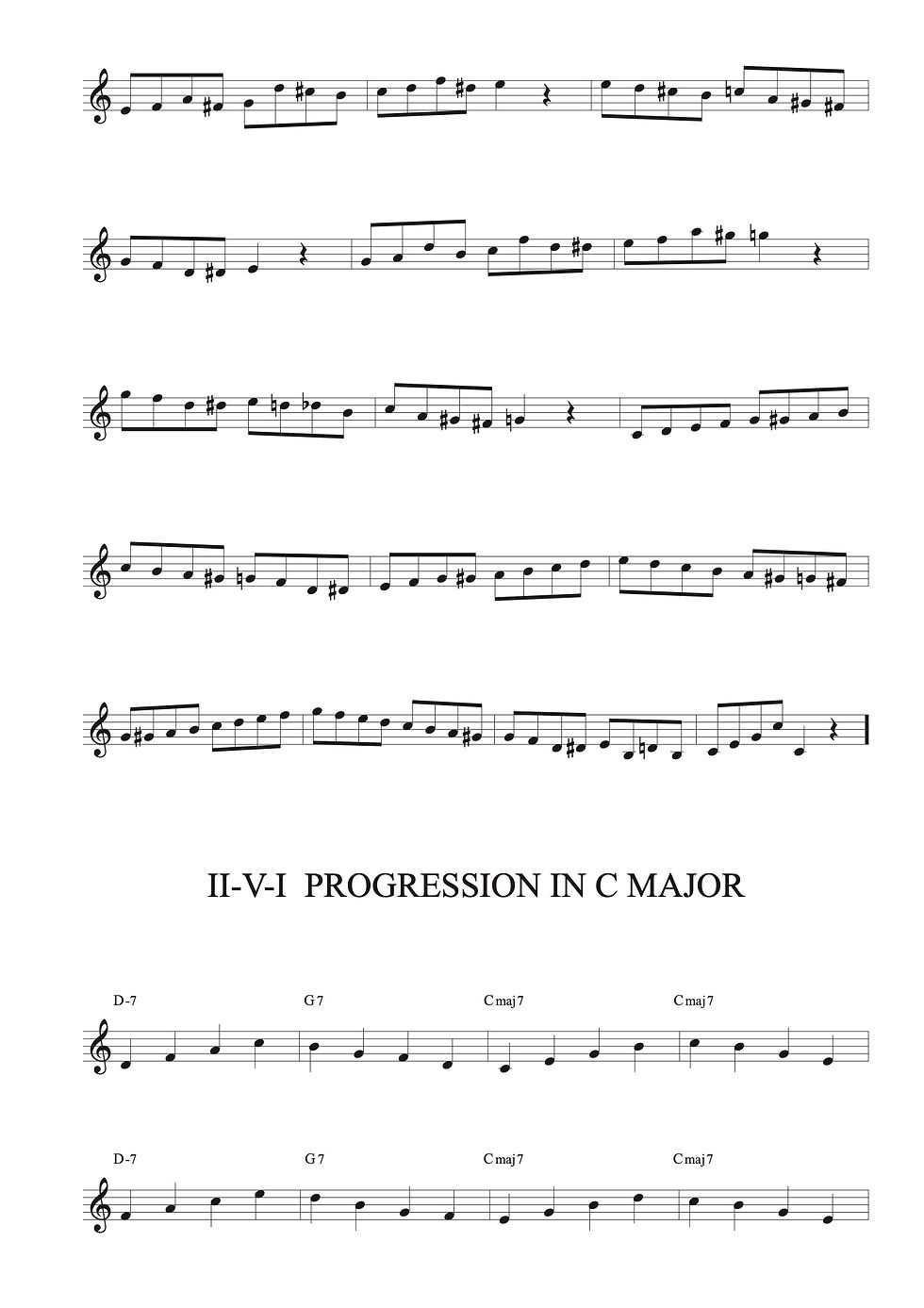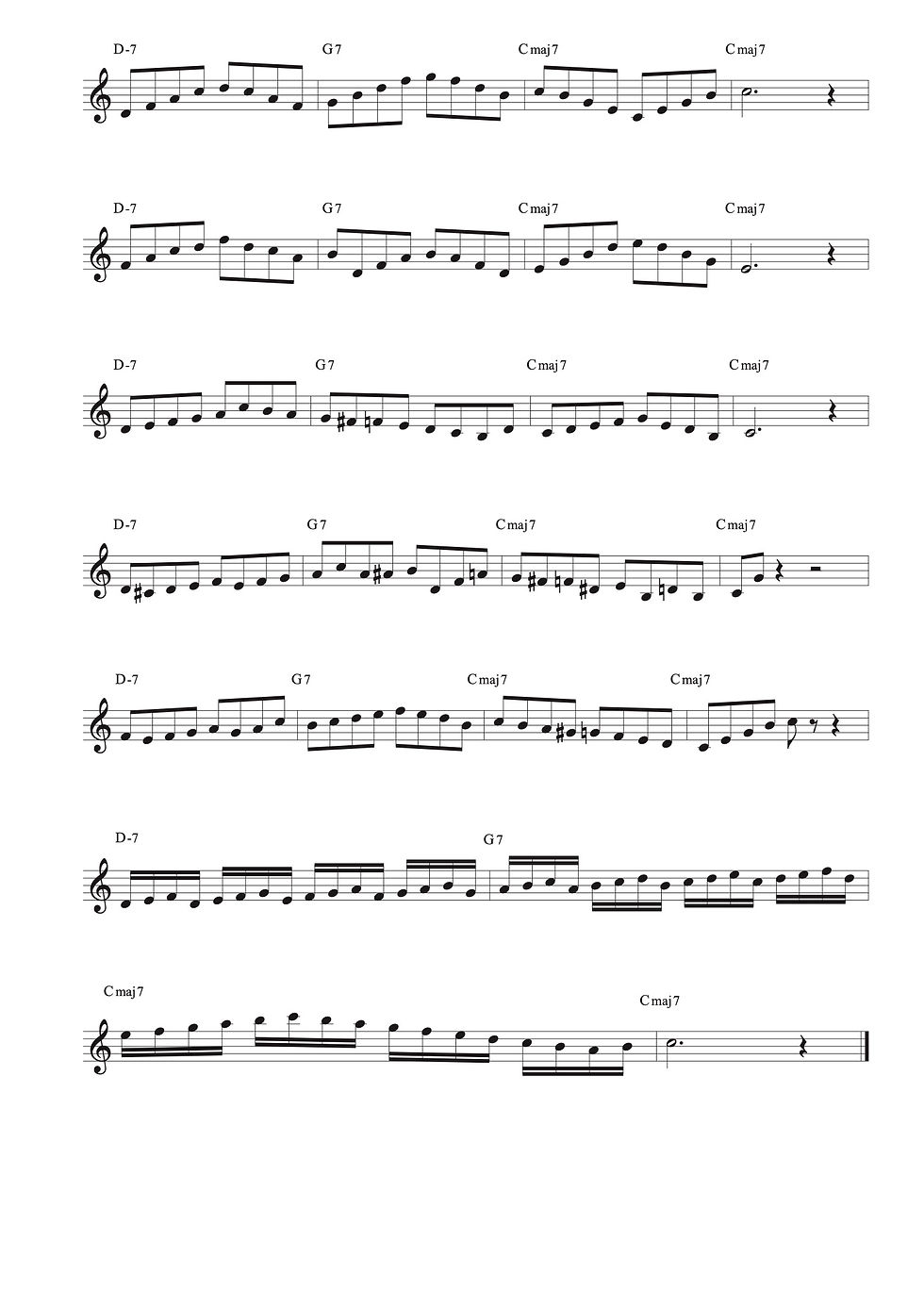Getting to know your musical instrument jazz practice
- Darren Lloyd
- May 13, 2024
- 5 min read
Getting to know your musical instrument jazz practice
If you are keen to play beautiful melodic jazz solos, something that you must do is to really get to know your instrument!
What can this mean?
There are a number of ways to do this but many teachers seem to neglect or maybe don’t even know the importance of them.
In western music, we are taught our scales and arpeggios pretty much, always starting on the root! So, when we first come to improvise, it’s hard to not look at a chord and just think of the root, usually by the time you’ve worked that out, you're into the next chord, already feeling frustrated!
Don’t worry, I was there too.
We are always taught to read notation with very often little to no focus on developing the ear. This is extremely important and must be practiced as when we solo, we are playing what we hear. At first what we remember but eventually what we hear! Don’t worry I will explain the difference later in this post for you.
So, in this post I will teach you a number of ways to practice, I use everyday, to help develop my ear/finger coordination and also my jazz vocabulary. Which is getting to know my instrument even better!
Please leave a comment if you have also experienced any frustrations or wins, once you started practicing the right things!
Many people believe that jazz improvisation is only for the gifted few that have amazing ears and superior musical skills, I am here to tell you that is not true. Sure, you may never be able to play like Arturo Sandoval, Chet Baker or Clifford Brown but if you practice the right way, focusing on the fundamental skills needed to improvise, you will make progress. Some of you, outstanding progress!
Here is a super simple exercise you can do straight away to start developing your ear/finger coordination.
Think of a simple hymn tune or nursery rhyme. A tune you know very well that would be easy to play on your instrument. Let’s for now, imagine that tune is ‘Happy birthday’. Try to play it on your instrument. Try to not think theoretically but it starts on the 5th. If you are in C major, start on the g.
Try it now!
How did that go? Easy? If not, keep trying until you do find it easy. Once you can do it in C, move onto another key. The keys that you play in less frequently will probably be the keys you struggle in most. Why not try F# major?
How was that?
I suggest playing simple tunes like this until you start to find it easier.
Next, try playing a tune like a simple jazz standard, or a simple bebop head (Now’s the time maybe), if you want to, try in different keys, or, just play different standards, in what ever key they are normally played in.
A tricky tune with lots of chromatic notes is the standard ‘The shadow of your smile’.
Practicing this way will gradually help you be able to play what you hear. The more jazz vocabulary you practice and internalise, the more fluent your playing will become. More on that later. What is very important though is that you play the tunes you can sing very well!
What you are actually doing here is transcribing. I unknowingly used to do this as a very young player.
I had a recording entitled ’22 trumpet greats’ and I used to happily try to play along with Kenny Baker on tunes like sugar blues and cabaret. Something else worth mentioning here is the advantages of practicing in this way. Not only are you developing that all important ear/finger coordination but you will also be learning phrasing, sound, style, articulation, phrasing, embellishments….. see what I mean… well worth doing.
Something else you can do is to practice jazz patterns but don’t just copy them blindly because someone told you to in a book. You need to know how, where and when you can use them.
Here are a few examples of how you can practice jazz patterns which will help you develop ear/finger coordination, jazz vocabulary and also knowledge of the chord changes.
Here is a simple pattern going through a key centre diatonically, no chromatic notes.

Here is the same exercise inserting possible chord changes.

By practicing the second way, you are also practicing vocabulary you can actually use in a solo.
Here is another easy to learn pattern. Let’s change key this time.

Here it is again with possible changes.

The more patterns and vocabulary you have practiced in a targeted systematic way, the more chance you actually have of hearing it whilst soloing. The idea is to not remember the patterns but hear them and be able to instantly execute them in a solo.
Of course this doesn’t happen overnight but by practicing this way, you can really develop your own vocabulary. I suggest using vocabulary that resonates with you, what do you love, what excites you? Use that vocabulary. This is exactly how I have developed and am developing my own vocabulary.
Here are a few more vocabulary/pattern ideas I have stolen from my favourite players and how I practice them.
Clifford Brown - Chromatic enclosures

Clifford Brown - 2 note enclosures

Tom Harrell - Scale fragments

Fats Navarro - Broken chords

Mark Levine - Running the scale

There are literally hundreds of these type of vocabulary fragments you can easily practice and get into your own playing, if practiced the right way of course!
Here is a jazz solo of a simple blues using chord tones, scale fragments and the vocabulary shown in previous examples.

By practicing and learning to hear and execute the type of ideas you want to play, you stand more chance of actually hearing the vocabulary when improvising!
Practice what you want to play like! I can assure you, you won't start suddenly staert sounding like Clifford Brown if you don't practice Clifford Brown vocabulary and study his style and articulation...
Here is a link to a scale and pattern book I created both in treble clef and bass clef. The patterns are a great way to get simple vocabulary into your own playing in all keys! Maybe start off by reasing them and gradually internalise them in different keys!
This is what it looks like in C major. Remember they are written out in all 12 keys though.
Page 1

Page 2

Page 3

Page 4

Page 5

I have a whole bunch of free resources I am giving away if you sign up to the jazz etudes newsletter!
Here are the videos when I tell you about them -
Getting around the ii v i - Email 1
Can can jazz etude - Email 2
How can I practice jazz vocabulary? - Email 3
All of me chordal solo - Email 4
Simply subscribe to the newsletter here - https://www.jazzetudes.net/
Darren.



Comments